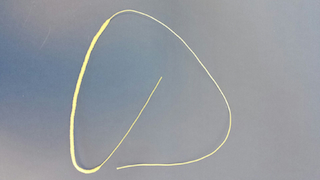Choosing the Right Way to Clean Between Your Teeth
Home-based preventive dental care should be done daily, and most people remember to brush their teeth twice a day
But brushing only cleans about 60% of your teeth. A toothbrush can’t reach the remaining 40%, the surfaces where teeth touch together. So you need a reliable way to remove plaque from between your teeth.
In this article, we’re going to look at four methods:
- Floss
- Superfloss
- Interdental Brushes
- Toothpicks
They can all reach between teeth and all are used to remove plaque and food particles from these spaces. But which one is the best for you?
There isn’t a one-size-fits-all solution when it comes to cleaning between your teeth. Dr Teo helps every patient to figure out which method of cleaning between the teeth is right for their unique circumstances.
How Do You Decide the Best Way to Clean Between Your Teeth?
Here are some things to think about when making the decision.
How Wide Are the Spaces Between Your Teeth?
One thing to consider is how wide the gaps are in between particular teeth. Even in the same mouth, the size of these gaps will vary. The front teeth may have tiny gaps, while the back teeth often have broader gaps. You may find that floss works best for the front teeth, and one or more different sizes of interdental brushes work better at the back.
Do You Have Unusual Spaces to Clean?
If you wear braces or have bridges or implants, you might have spaces that floss cannot clean well. In these cases, Superfloss or a certain size of interdental brush might be the better way.
What if You Can’t Use (or Hate Using) Floss?
If you find floss difficult, messy or even a bit gross to use, choose another option that ensures you’ll clean between your teeth each day.
Superfloss: A Floss Alternative

Superfloss is a specialised floss. It is a little like a long, flexible pipe cleaner on one end with a stiff threader on the other. It can be easily threaded into the gaps between your teeth. The pipe cleaner end is wide and flexible enough to clean these gaps quite well.
It can be difficult to find in the shops or at the pharmacy, but dentists often keep it in stock.
Interdental Brushes: A Floss Alternative
These look a little like tiny bottle brushes. They come with either short or long handles to make them convenient to use in the back areas of the mouth.
To use, it’s simply a matter of locating the spaces between your teeth, gently placing the brush tip into them, and using it to clean the side of each tooth carefully.
While designed to be disposable, interdental brushes can usually be used several times. Be sure to rinse your brush clean after use and store it with its cap on.
Interdental brushes are convenient to use and easy to take with you. It’s easy to learn how to use interdental brushes.
What About Toothpicks?
Toothpicks are not an effective floss alternative.
They can be handy if you have some food caught in between your teeth and may even be a more socially acceptable method (most people will raise an eyebrow if you pulled out floss at the dinner table).
However, toothpicks are not flexible enough to clean the gaps well and may cause damage to the gum if you are not very careful. Use toothpicks with great care.
It doesn’t really matter which method you choose to clean between your teeth, as long as:
- The method you choose effectively removes plaque and food residue
- It’s something you do every day
Tailored Advice for Your Dental Home Care
If you want to know the best way to clean between your teeth, ask Dr Teo at your next appointment. She is more than happy to make personalised recommendations based on your individual circumstances.
